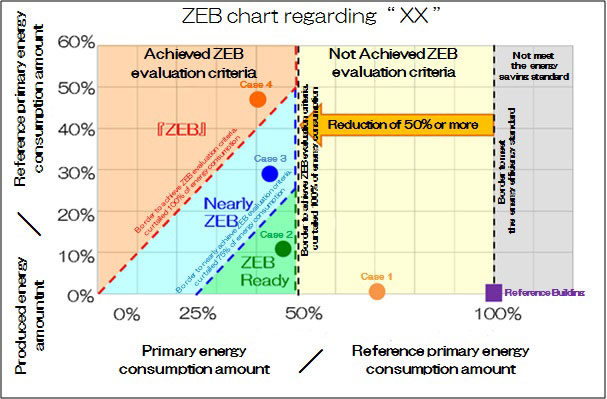This Page is Home![]() Updates
Updates
What's New
Penta-Ocean Construction Co., Ltd.
Takuzo Shimizu, President, CEO and Representative Director
Penta-Ocean Jointly Developed a Software, “ZEB Assessment Tool” for Saving Energy: Make it Possible to Evaluate the Energy Conservation Effect in Design Phase
Tokyo, Japan – January 31, 2018 – Penta-Ocean Construction Co., Ltd. is pleased to announce that we have jointly developed a software, “ZEB assessment tool”, in cooperation with Asunaro Aoki Construction Co., Ltd., The Zenitaka Corporation, TOA CORPORATION, Nishimatsu Construction Co., Ltd., and Sumitomo Mitsui Construction Co., Ltd, and commenced its utilization. “ZEB assessment tool” is for evaluating the effect, in case of applying each technology, composed of Net Zero Energy Building (ZEB)*¹, for energy saving in a design phase.
Background of the software development
Since the oil crisis, thorough energy conservation has been required as a priority issue, as the civilian sector, which consists of business department and household sector, which accounts for more than 30% of domestic final energy consumption, and its consumption rate has been increasing. Consequently, Zero Energy Building (ZEB) has attracted attention as an effective way to achieve substantial energy saving without lowering the environmental quality inside and outside the room. According to the "Basic Energy Plan" approved by the Cabinet in April 2014, policy objectives states that "For buildings, we are aiming for applying ZEB impartially to newly built public buildings by 2020, and newly built private buildings by 2030 respectively”.
In order to design the buildings aiming at ZEB, it is necessary to evaluate the energy conservation effect in advance, before applying each technology.
In the conventional procedure, "Energy consumption performance calculation program*²", which is used for conformity judgment, or notification, had been widely implemented in accordance with "The Act on the Improvement of Energy Consumption Performance of Buildings" (hereinafter referred to as “Building Energy Efficiency Act”)
However, despite our attempt to adopting sophisticated energy saving technology, there were restrictions on the types of energy-saving technologies to evaluate the effect in the design phase aiming for ZEB.
In spite of the fact that there are a number of programs for evaluating sophisticated energy saving technologies, there had been also problems concerning its expertise on operation and limitation on use. Considering that practical designers practically utilize the programs within a limited design period, it had not been under the appropriate environment for evaluating ZEB.
Therefore, we have developed the "ZEB evaluation tool", by expecting that the demands for the tool, which is easy for practical designers to use, will be increased, in order to make it possible to evaluate the energy saving effect in design phase for both sophisticated and advanced energy saving technology.
Outline of “ZEB Assessment Tool”
The following are features of “ZEB Assessment Tool” developed by us.
Future tasks
To sum up, we will continue to develop a system, in order to further improve operability and increase the types of energy-saving technologies for evaluating energy saving effect. Moreover, we plan to promote the system proactively, by submitting efficient proposals to our clients.
*1 Net Zero Energy Building (ZEB): It refers to a building, whose annual primary energy consumption is roughly zero in net. As the idea of ZEB is familiarized in Japan, it refers to a building with a reduction performance of 50% or more against energy saving standards, by conserving energy other than energy generated by solar power generation.
*2 Energy consumption performance calculation program: This program is promoted by the Building Research Institute, Ministry of Land, Infrastructure, Transport, Tourism, and National Institute for Land and Infrastructure Management. This is for calculating the annual primary energy consumption of the buildings in the design phase, based on Building Energy Efficiency Act, which is utilized for conformity judgment, or notification.
*3 HASP program: This is a general term for source program, execution format, manual, trial output and input data of HASP / ACLD / 8501 / HASP / ACSS / 8502, NewHASP / ACLD, provided by Japanese Association of Building Mechanical Electrical Engineers (JABMEE).
*4 Building Energy Index (BEI): This indicates the energy saving performance of the designed building. This is the figures obtained by subtracting the designed primary energy consumption from the total amount of the reference primary energy consumption, which varies according to purpose of the building room use, by notification of Building Energy Efficiency Act.
*5 ZEB chart:Examples of output display of ZEB chart are as follows:

